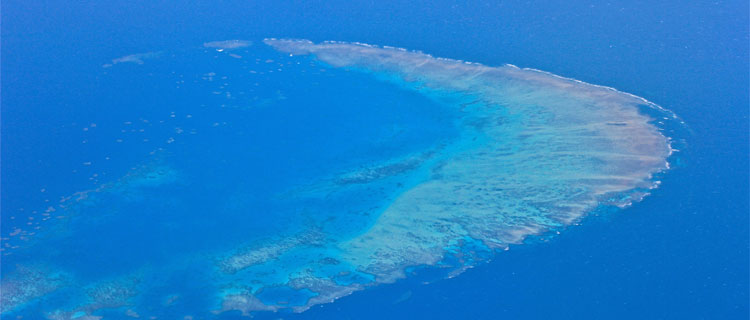
Marine protected parks
Not just drawings on a map
Five features that can improve conservation efforts within marine protected parks
- Study published in Nature shows that the current structure of many marine parks designed for conservation are largely inefficient
- Researchers counted numbers and sizes of over 2000 fish species along underwater transect lines at 1986 sites in 40 countries
- Parks often fail to reach their full potential because of e.g. illegal harvesting, poor regulations, or inadequate size of reserves
Good intentions are never enough and when it comes to biodiversity conservation it can become painfully evident.
In a new study published in Nature, centre researcher Stuart Kininmonth, together with an international team of marine experts and conservationists, show how the current structure of many marine parks designed for conservation, or Marine Protected Areas (MPAs), are largely inefficient with little or no difference in protection between fish living within these areas and those living in fished areas.
Paper parks
Kininmonth and his colleagues counted numbers and sizes of over 2000 fish species along underwater transect lines set at 1986 sites in 40 countries. The study, unprecedented in its global scale – included the efforts of over 100 recreational divers collecting data in their spare time for the Reef Life Survey programme, a new concept in marine conservation where scientists, marine managers, and recreational divers work together to collect and analyse broad-scale biodiversity information.
They then used this information to measure how fish communities in 87 MPAs worldwide differed from those in nearly fished areas.
"Our study reveals the need for more efficient marine protected areas. Indeed many of them today are only 'paper parks' – areas drawn on the map with no measurable benefits for conservation"
Stuart Kininmonth, co-author
Those areas that were considered effective were typically:
1. no-take areas
2. well-enforced
3. more than 10 years old
4. large in area
5. isolated by deep water or sand from fished areas
MPAs with these characteristics had on average eight times more large fishes, nine times more groupers, and 20 times more sharks than fished areas, the study shows.
Not reaching full potential
Professor Graham Edgar, the lead author of the paper, highlighted the importance of establishing more effective MPAs.
"The need for protected areas that safeguard whole communities of marine species has never been greater given the huge changes now occurring in out-of-sight underwater and our poor knowledge of exactly what is happening. At present, coastal zoning maps are confusing, with the few conservation gems hidden amongst protected areas that are ineffective because of inadequate regulations or poor enforcement," Edgar says.
Stuart Kininmonth says that global conservation targets based on area alone will not optimize protection of marine biodiversity.
"MPAs often fail to reach their full potential because of issues such as illegal harvesting, regulations that legally allow detrimental harvesting, or emigration of animals outside boundaries because of continuous habitat or inadequate size of reserve," he says.
“More emphasis is needed on better MPA design, durable management and compliance to ensure that MPAs achieve their desired conservation value.”
citation
Edgar, G.J., Stuart-Smith, R. D., Willis, T.J., Kininmonth, S., Baker, S.C., Banks, S., Barrett, N.S., Becerro, M.A., Bernard, A.T.F., Berkhout, J., Buxton, C.D., Campbell, S. J., Cooper, A.T., Davey, M., Edgar, S.C., Forsterra, G., Galvan, D.E., Irigoyen, A. J., David, Kushner, J., Moura, R., Parnell, P. E., Shears, N. T., Soler, G., Strain, E.M.A., Thomson, R.J. 2014. Global conservation outcomes depend on marine protected areas with five key features, Nature, DOI: 10.1038/nature13022






